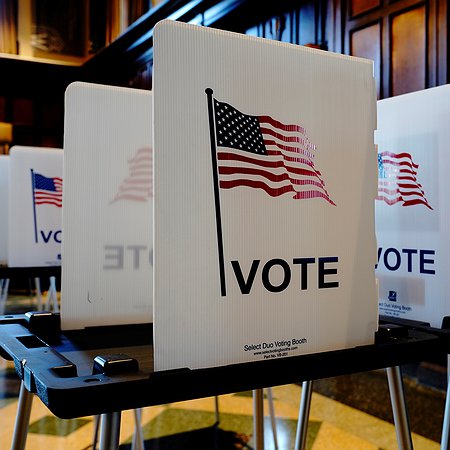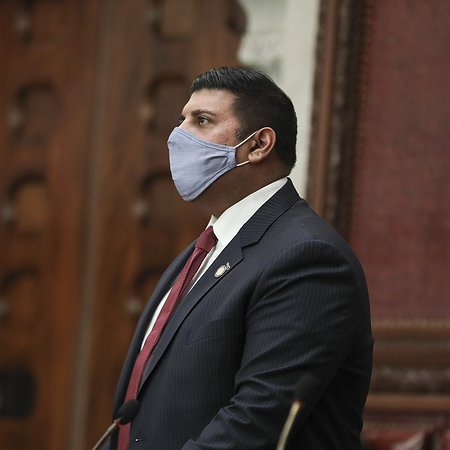Study finds more proof bail reform works
A study on the effects of bail reform concludes, once again, that bail reform does not increase crime. Eliminating the ability of judges to detain someone accused of a crime does not drive crime and may in fact reduce crime.
The Briefing

A study on the effects of bail reform concludes, once again, that bail reform does not increase crime. The main takeaway from the report is that eliminating the ability of judges to detain someone accused of a crime does not drive crime and may in fact reduce crime. Due to a mistaken belief about relevant legal standards, the study makes an incorrect conclusion relating to recidivism in people charged with bail eligible crimes.
Major changes made by bail reform had no effect on recidivism
The study analyzed two “effects” of bail reform: mandatory release and bail-eligible cases. The mandatory release analysis compares cases that had bail set before bail reform, but were mandatorily released after bail reform because of statutory changes – in other words, it measures the low-level cases where judges were no longer allowed to set bail. Bail reform was designed to decrease unfairness and inequities in the criminal justice system by eliminating bail as an option for most misdemeanor and low level felonies.
The report, along with all reports before this one, shows that elimination of pretrial detention for misdemeanors and low level felonies did not increase recidivism rates, and may have actually decreased them. That is the main story of the study: eliminating the ability of judges to hold a person pre-trial is not a driver of crime and seems to have decreased crime. The major issue with the study is the second analysis: the bail-eligible cases.
Data showing increase in recidivism cannot be tied to bail reform
The study showed that people in upstate and suburban counties released after being charged with bail-eligible offenses in the first half of 2020 had a slightly higher recidivism rate than the same group of people released in the first half of 2019. However, there are clear issues with the sample the study’s authors use and the conclusions they draw from this particular subset of data.
While the authors attempted to design a data set and analysis of the effects of bail reform on bail-eligible cases, they unfortunately missed the mark. The study looks at bail decisions before and after bail reform was enacted and assumed that bail reform was the reason for any differences between the two periods of time. Yet, there is no way of knowing whether bail reform was the reason why a judge opted to release someone charged with a bail-eligible crime – judges have always retained discretion to evaluate each case and set the least restrictive conditions to ensure someone’s return to court. Each bail decision is made by an individual judge based on the unique facts and context presented to them – it is impossible to conclude that a judge’s decision in these circumstances is a direct result of bail reform. As detailed below, bail reform did not change the decision making process for judges setting bail on bail-eligible cases, except to allow judges to release people under supervision for more cases, which is still rarely used on bail eligible cases.
Importantly, the study uses the first half of 2020 as the most relevant part of its data set.This is a tricky sample size to draw any conclusions from. The data includes the early months of the COVD-19 pandemic, where judges were releasing many people charged with crimes, not because of bail reform but because of a global public health crisis. The study’s conclusion about bail-eligible cases is based on a causal relationship that does not exist.
Incorrect legal assumptions
The apparent root of the study’s incorrect causal assumption seems to be in the authors’ misapprehension of the law. There are several issues with some of the legal assumptions of the study. They justify their study design by claiming “before bail reform judges were more incentivized to set bail or remand people than after bail reform, as there were fewer non-monetary release options, no least restrictive release condition provision, and no “risk of flight” language.”
This is not the case. It is true that bail reform allowed for increased supervised release. But the idea that, before bail reform, judges did not have to follow the least restrictive release condition or consider someone’s flight risk when deciding whether to impose bail is legally incorrect.
When it comes to the least restrictive release condition and risk of flight, bail reform simply clarified legal standards that have been in practice long before bail reform came to New York. Before 2019, the statute around bail read: “the court must consider the kind and degree of control or restriction that is necessary to secure his court attendance when required.” In other words, the purpose of bail or pretrial supervision is to ensure someone returns to court. The pre-2020 statute asked judges to consider flight risk.
Moreover, the United States Supreme Court, in a 1987 case held that the Constitution requires judges to set the least restrictive form of bail. It is a common misconception, fueled by the misinformation campaign led last year by Governor Kathy Hochul, that judges are confused by the “least restrictive means” standard because it was a new provision included in the 2019 bail reform laws. As Justice Not Fear stated then, judges were not confused by the bail standards and the standards are based on the Constitution, not the 2019 bail reform laws.
It is wrong to assume, as the authors do, that judges were more incentivized to set bail in eligible cases before bail reform than after. Following bail reform, judges did not change their standards in bail eligible cases because the law told them too – the law only clarified standards long on the books. There is absolutely no credible evidence to conclude that judges were more likely to release people after 2020 on bail eligible cases because of bail reform. A global pandemic was the reason judges released more people in the first half of 2020, not a law that did not substantially change bail decisions for bail eligible cases.
Without that major assumption – that more people charged with bail eligible offenses were released because of bail reform – the study has no basis to conclude bail reform caused any increase in recidivism. It is unfortunate that the authors seemingly did not confer with legal experts in making their conclusions, especially when analyzing a policy that has been the victim of so much misinformation.







